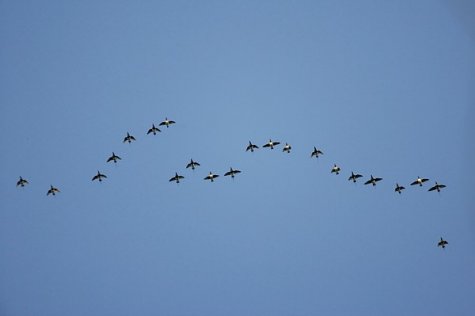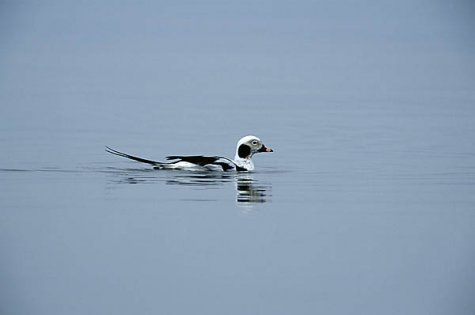Who are out there at sea?
Photos: Arne Ader
Translation: Liis
Long-tailed duck Aul Clangula hyemalis
In calm and clear weather large bird flocks can be seen at sea. If you have no binoculars at hand to look more closely a reasonable assumption is that they are long-tailed ducks or goldeneyes.
Plenty of passing migrants are on the move. A quite large number of long-tailed ducks stay to winter in our coastal waters; of course it depends on the ice conditions in winter, but one hundred to seven hundred thousand birds may stay. The Baltic coast is actually the most important wintering area globally for the long-tailed ducks that breed in the tundra.
Male birds are easily recognisable with their long tail feathers. In the winter plumage the head is white, neck and cheeks grey, dark brown and rust-coloured patches on the sides of the neck. The back is black, shoulders bluish white, the breast brown and the belly white – from a distance the impression is of black and white. In winter the female’s head, neck and belly are white, the crown and cheek patch dark – greyish-brown colours dominate. In contrast to other ducks the long-tailed ducks moult three times a year and each time into a different plumage.
The diving ducks fetch their food from the sea bottom, from depths of several up to several tens of meters.

Migrant flock of long-tailed ducks. Puhtu
Oil pollution at sea is a threat to long-tailed ducks in winter; it causes leaks in their nearly hermetically sealed plumage, the birds get wet and die in the cold. The number of long-tailed ducks has fallen markedly during the last decades. Long-tailed ducks have not been particularly hunted in Estonia although it is a game bird. They are hunted in Finland with freshly tarred barges anchored at sea – an ancient tradition. What to think of it is another matter.









